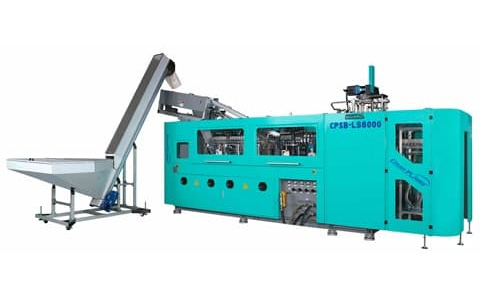In order to best understand single and two-stage blow molding, it is first important to understand a bit about the process of blow molding. Blow molding is a type of manufacturing process used to create hollow plastic parts by inflating a heated plastic tube until it forms the desired shape. The tube, called a parison, is then placed into a mold and allowed to cool and harden.
There are two main types of blow molding: single-stage and two-stage. In single-stage blow molding, the entire process takes place in one machine. The parison is formed and then immediately placed into the mold where it is blown into shape and cooled. Two-stage blow molding involves forming the parison in one machine and then transferring it to a second machine to be blown into its final shape.
Both methods have their own advantages which will be discussed in more detail below.
What is Single-Stage Blow Molding?
Single-stage blow molding is a specific type of stretch blow molding, which uses a plastic bottle injection mold to create matrices and cavities directly from preforms. This process occurs in one step within a PET stretch blow molding machine, which eliminates the need for air conveyor systems and allows the entire stretch blow molding process to take place within a single machine at rapid speeds. Additionally, single-stage blow molding reduces energy costs associated with stretch blow molding due to the absence of separate steps between preform production and bottle finishing.
What Are The Benefits Of Single-Stage Blow Molding Over Two-Stage Blow Molding Processes?
Single-stage stretch blow molding machines, such as PET stretch blow molding machines, offer cost savings and process efficiency over two-stage processes like plastic bottle injection. These machines are equipped with multiple cavities to create more products faster, which can lead to higher output per shift and less downtime. Additionally, the use of single-stage stretch blow molding eliminates a secondary stretch blow step and the additional investment in equipment. This streamlined process also reduces labor costs and potential scrap during manufacturing. The compact design with one working site gives these machines an edge in terms of saving floor space while still providing superior performance compared with other plastic processes.
How Does Single-Stage Blow Molding Work and What Kind Of Products Can Be Made With It Effectively?
The single-stage process relies on a high-quality PET material which is heated until it becomes soft enough to be able to be shaped. It is then extruded through a die, creating an elongated tube (parison). The parison is then transferred to the blow molding machine where it is clamped in place over a mold cavity. As the parison cools, it takes on the shape of the mold cavity and becomes solidified as air pressure blows it up from within. This creates hollow plastic parts that are strong and durable with consistent wall thicknesses throughout. Single-stage blow molding can be effectively used to produce a wide range of products including bottles, containers, drums, jerrycans, automotive parts, healthcare packaging, and more.
Why is Two-Stage Blow Molding Often Used For More Complex Products or When Higher Volumes Are needed?
Two-stage PET stretch blow molding machines are an effective solution for the manufacture of more complex products or when higher volumes are needed. This type of machine would allow operations to be combined, including the plastic bottle injection followed by a pre-form stretching and blowing to get the desired shape and size. During this process, PET is heated and then blown against a mold which shapes it according to design specifications. This method is highly cost-effective and allows quick delivery of volume orders as each PET stretch blow molding machine has multiple cavities that can produce multiple articles in a single step. The use of two-stage PET stretch blow molding technology can help organizations be more efficient while meeting high standards.
How Does The Two-Stage Process Work and What Are Some of its Advantages?
PET stretch blow molding technology offers a unique two-stage production process that combines plastic bottle injection with stretch blow molding to create high-quality PET containers. This two-stage process minimizes energy usage, along with reducing the manufacturing time and cost compared to the traditional single-stage method. In addition, PET stretch blow molding machines provide a higher output rate than other machinery and are capable of cloning complex three-dimensional shapes. Furthermore, PET containers produced through this process have consistent wall thickness and very good optical clarity which is beneficial for various consumer goods packaging applications. Overall, PET stretch blow molding technology greatly improves efficiency over single-stage blow molding methods making it an advantageous choice for businesses in the industry.
In Conclusion
In short, single-stage blow molding is a process that can be used to create hollow plastic products quickly and efficiently. The benefits of this method include being able to produce large quantities of product at high speed, as well as the fact that it requires less energy than other methods. Additionally, single-stage blow molding is versatile and can be used to create a wide variety of different products. Two-stage blow molding is often used for more complex products or when higher volumes are needed. This method involves first creating a parison, which is then placed into a mold where it is blown into its final shape. The advantages of two-stage blow molding over single-stage blow molding include greater accuracy and flexibility in terms of design. If you would like to learn more about single-stage or two-stage blow molding, or if you are interested in discussing your specific needs with our team, please contact us today.



